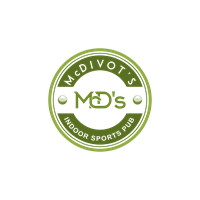Operational efficiency isn’t just about working faster — it’s about working smarter. Small businesses that streamline workflows, automate repetitive tasks, and empower teams with the right tools can save time, cut costs, and reduce burnout. Companies like ZenBusiness and others have highlighted how efficient operations form the backbone of sustainable growth and scalability.
TL;DR
Small businesses can significantly improve efficiency by:
-
Automating repetitive tasks (e.g., invoicing, scheduling, support)
-
Using digital tools for collaboration and workflow tracking
-
Standardizing key processes to reduce human error
-
Outsourcing or leveraging AI for time-intensive admin work
-
Continuously reviewing performance data to optimize decisions
1. The Efficiency Revolution
In today’s business environment, AI tools are reshaping how teams operate. There are multiple ways AI benefits small businesses — from automating invoices and tracking inventory to streamlining customer communication. By reducing manual input in everyday processes, small firms free up valuable hours to focus on innovation and strategic growth.
This shift doesn’t replace people — it amplifies them. For example:
-
Invoicing & accounting tools like QuickBooks automate billing and reconciliation.
-
Scheduling apps such as Calendly eliminate time wasted on back-and-forth booking emails.
-
Inventory systems like Zoho Inventory forecast stock needs to prevent over-ordering.
-
Customer support chatbots (e.g., Intercom, Tidio) handle simple queries 24/7.
These time savings compound over time, improving both accuracy and morale.
2. Building the Foundation: Key Areas to Optimize
🧭 Core Categories of Operational Improvement
|
Area |
Primary Tools |
Efficiency Benefit |
|
Finance & Admin |
Xero, Wave |
Automate invoicing, reduce manual entry |
|
Project Management |
Asana, Trello |
Visualize and streamline workflows |
|
Customer Service |
Zendesk, HubSpot |
Track tickets and automate follow-ups |
|
Inventory Management |
TradeGecko, Lightspeed |
Track levels and reordering automatically |
|
Human Resources |
Gusto, BambooHR |
Automate payroll and onboarding |
Each of these domains benefits from automation, standardization, and continuous data tracking.
3. Checklist: Is Your Small Business Operationally Efficient?
Use this short diagnostic to see where your business stands.
✅ Process Clarity:
Are your main workflows documented and easy to follow?
✅ Automation Coverage:
Do at least 50% of repetitive administrative tasks run automatically?
✅ Data Accessibility:
Can your team view key performance metrics in real time?
✅ Task Delegation:
Are roles and responsibilities clear to all stakeholders?
✅ Continuous Improvement:
Do you review systems quarterly for upgrades or redundancies?
If you answered “no” to two or more, you likely have untapped efficiency gains.
4. How-To: Implement an Efficiency Upgrade in 5 Steps
-
Map Current Workflows
Identify bottlenecks. Tools like Lucidchart can help visualize inefficiencies.
-
Automate Repetitive Work
Use simple automation in tools like Zapier to connect apps and move data without human input.
-
Adopt Cloud Collaboration
Replace email-heavy workflows with real-time tools like Slack, Notion, or ClickUp.
-
Outsource Strategically
Platforms such as Upwork or Fiverr can offload specialized, non-core tasks affordably.
-
Monitor & Refine
Review performance data monthly with dashboards from Power BI or Google Data Studio to fine-tune productivity.
5. Beyond Automation: The Human Factor
Even the best systems fail without team buy-in. Foster an efficiency culture by:
-
Training staff to use automation tools effectively
-
Rewarding time-saving initiatives
-
Encouraging cross-department collaboration
-
Gathering regular feedback on what’s slowing people down
Remember, efficiency isn’t a one-time project — it’s a mindset.
6. FAQ
What’s the first step to improving operational efficiency?
Start by identifying your biggest bottlenecks — where tasks stall or require excessive manual input.
How much can automation really save?
McKinsey estimates small firms can reclaim up to 30% of administrative time using automation and workflow integration tools.
Do AI tools require technical expertise?
Not necessarily. Most modern platforms are designed for non-technical users with drag-and-drop functionality or templates.
How do I know if my business is “too small” for AI tools?
If you use spreadsheets, email, or manual task tracking, you’re already ready. AI tools simply formalize and scale what you do manually.
7. Glossary
-
Automation: Technology that performs repetitive tasks without human intervention.
-
Workflow: A defined sequence of steps to complete a recurring business process.
-
Cloud Collaboration: The ability to work with others in real time over shared digital platforms.
-
AI Integration: Embedding intelligent systems to make decisions, predictions, or suggestions.
-
Operational Efficiency: Achieving maximum output with minimal wasted effort or cost.
Efficiency Is the New Competitive Edge
Small businesses thrive when every hour and dollar counts. By leveraging automation, optimizing workflows, and cultivating a culture of efficiency, you can reduce friction, delight customers, and scale sustainably.
Efficiency isn’t about doing more — it’s about doing what matters better.
Discover the vibrant community of Grimes and explore exciting events that bring us together by visiting the Grimes Chamber & Economic Development website today!
_(7).jpg)


